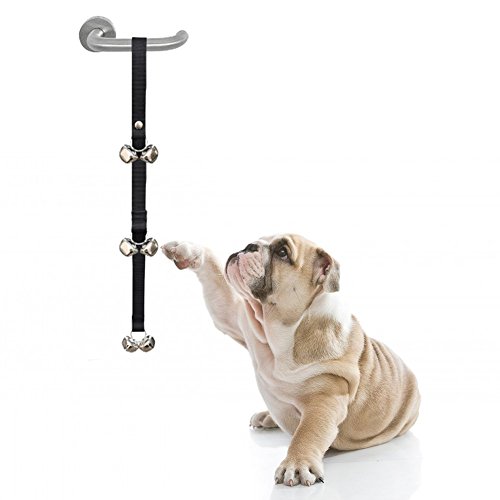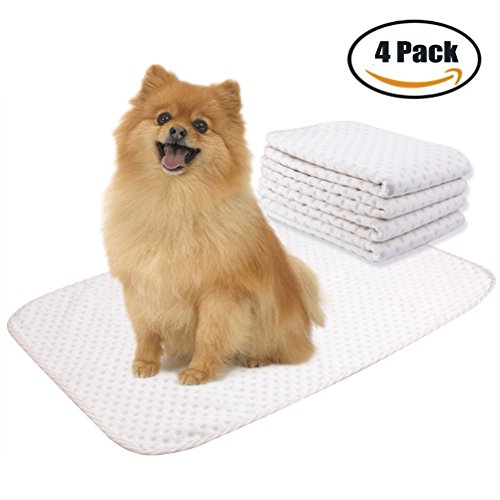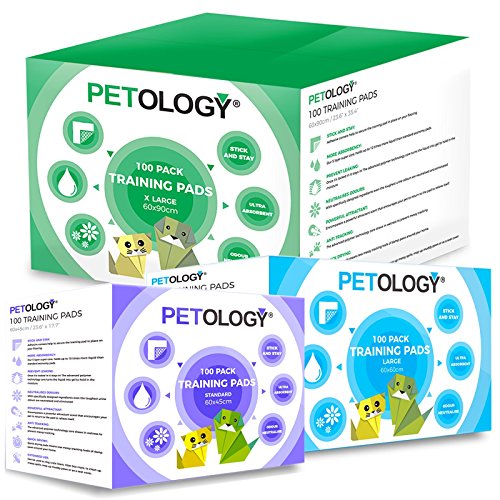
The following list of equipment is vital for the well-being of a puppy.
Bedding
To ensure their puppy is comfortable when resting/sleeping, owners should buy a bed that is large enough for it to grow into, and stretch out in. The type of bedding used is also important and there are many types available online and in pet stores.
One of the most popular is a synthetic simulated sheepskin known as a vetbed’. Benefits include; machine washable, hygienic, non-allergic and relatively resistant to chewing.
Collars
When it comes to choosing the most comfortable and suitable collar for a puppy the breed, size and age of the puppy need to be taken into account. Also, collars should be checked on a daily basis for condition and fit as puppies grow at a considerable rate. If the owner cannot slip two fingers underneath the collar then it is too tight and needs replacing.
Puppy Crates
Puppy crates can be very useful for containing a puppy and keeping it safe and out of trouble when left alone. In order to ensure a puppy is fully comfortable and happy with their play area, owners should:
- Buy a crate big enough for the puppy to grow into. The puppy should be able to sleep stretched out and stand up when fully grown without any discomfort.
- Place some bedding inside along with some toys and occasional treats so that the puppy learns to enjoy going in there.
- Place the puppy inside whenever it falls asleep.
- Leave the door open until the puppy is comfortable being in there but close it when it is being fed and when it sleeping.
- Let it out of the crate as soon as it wakes up or finishes its meal.
- Take it for regular toilet intervals to ensure it doesn’t empty its bladder and bowels inside the crate. Puppies can become very distressed if they have to foul near their beds. Any mishaps that do occur should be cleaned out immediately.
- Remove the puppy’s collar when putting it in the crate to avoid it getting caught.
- Only leave their puppy in the crate for a maximum of two hours during the daytime, although this can gradually be increased.
Leads
As with dog collars, choosing a suitable lead depends on the size and breed of a puppy. A good lead should be strong and have a comfortable grip but never be too long, too short or too heavy. There are chain leads which may be useful for owners of puppies that like to chew or carry the lead in their mouth. Other alternatives are nylon leads and the traditional leather lead. The latter needs to be oiled or saddle soaped to be kept clean and supple.
Once a suitable lead has been chosen, it is important for owners to make sure they attach it to the ‘D ring’ of the collar and not onto the weaker split ring that attaches the identity disc (see below) to the collar.
Identity Discs
UK law requires all dog owners to inscribe their name and address on the dog’s collar or on a plate or disc attached to it. Failure to follow this legislation can result in a fine of up to £5,000, regardless of if it is microchipped (see below) or not. Owners may also choose to give a telephone number although this is not legally required. Identity discs cut out the need for owners to buy a dog licence.
Microchipping
Having a microchip placed inside a puppy can be a very useful safety precaution for owners. Dogs that are found (without their collar) after being reported lost or stolen can then be scanned by an authorised agent such as a vet, dog warden or rescue centre and handed back to their owner.
Interesting Toys
To help minimise chewing on personal things in the house, owners should provide their puppy with a range of appropriate toys to play with. Chew toys provide mental stimulation, allow them to exercise their jaws and help them keep their teeth clean. Toys such as Frisbees and balls on ropes are also great for puppies as they encourage interactive play with their owners.
However owners must ensure that the toys they choose are safe for their puppy. A puppy can easily choke on a toy that is too small or other small items such as golf or squash balls, whilst other items may cause harm by splintering. Chew toys can also become dangerously small after a prolonged period of chewing.
Kennels
Although most dogs prefer to live indoors, some like to spend most of their time outside. Owners of puppies that are particularly fond of being left in the garden should provide them with an enclosed run and a specially designed kennel filled with toys. Providing a puppy with its own space will not only keep it from destroying the garden but also help it avoid separation anxiety in the future.
Food Bowls
Puppies need separate (non-tip) bowls for water and food. Owners must ensure that fresh water is always available for their puppy.
Essential Puppy Products
Car Travel
When travelling with a puppy in the car, owners should ensure a dog guard is placed in front of their puppy and secured with a car seat harness. Ideally, a crate or fixed cage should be used as both provide a dog with its own sufficient space and ensure it is fully protected while in the car.
Puppies need time to get used to car travel. Owners should start by taking their puppy on very short trips when the puppy is tired so that it falls asleep. Once the puppy has become fully accustomed to travelling in the car it will be able to cope with longer journeys without feeling car sick.
Poo Bags
Under the Clean Neighbourhoods & Environment Act 2005, dog owners are legally required to clean up any poo left by their dog in public areas. Waste should be put into poo bags, sandwich bags or nappy sacks and disposed of in an appropriate bin. Owners should ensure they have a large supply of these bags and carry them whenever they venture out with their puppy.
Grooming
Grooming is a very important aspect of dog ownership. Not only does it smarten a dog’s appearance it also provides owners with the opportunity to spend some quality time with their dog. Grooming also gives owners the chance to check their dog more closely for signs of fleas, ticks or skin irritations.
With puppies, the concept of grooming should gradually be introduced in very short sessions. Owners must ensure they brush their puppy slowly and gently, especially over sensitive area, so that it does not get irritated and start to resist future grooming sessions.
It is also important for owners to establish and stick to a regular routine of grooming sessions. A good time to groom a dog is after its walk, while it is relieved and calm, while the frequency depends on the length of the dog’s coat. Short-coated dogs need to be groomed twice a week, while breeds with medium to long coats or thick undercoats need gentle de-tangling every day to keep them knot free.
Some dogs will also need to have their beards or hair around their eyes cleaned regularly and their nails trimmed if they get too long, Owners of dogs with white or sparse coats must remember to use a high factor sun cream on their ears and other exposed areas in hot sunny weather as they can be vulnerable to sunburn.
Clothing
Some puppies may benefit from wearing a fitted jumper or coat when taken for a walk, especially if they are short coated or have recently been clipped / trimmed. Protective clothing for long coated dogs is available to help keep them clean and dry in the winter. Owners should make sure that any pieces of clothing they buy are well tolerated by their puppy and are never worn indoors.
Dog Oral Care
Looking after a puppy’s oral health is essential in helping to prevent gum disease, which can lead to a number of health problems developing. Special canine toothpaste is available to dog owners in a range of different flavours. Unlike toothpaste designed for people, canine toothpaste does not foam in the mouth thanks to a special rubber thimble for dogs’ teeth.
Bathing & Drying
Deciding how often a puppy should be bathed depends on a number of factors such as the particular breed of the puppy, how much time is spent outdoors, the pup’s age and any existing medical conditions, etc.
The most common reasons for bathing a puppy include:
- The pup has rolled about in something smelly – Most dogs can have a habit of seeking out something smelly and rolling in it.
- The pup has a doggy smell – an odour on the coat can often be traced to a problem with the ears, mouth, feet or anal glands, while an odour coming from the skin is often a sign of disease, such as yeast infection.
- The pup has dandruff – dandruff can be caused by dry, irritated, or oily skin, but can be taken care of using the right shampoo.
- The pup has fleas, mites, or lice – Getting rid of external parasites is best achieved using the most appropriate shampoo.
*Owners must ensure they use a shampoo formulated for dogs. Human shampoos have a different pH level and often use harsher detergents than pet shampoos.














